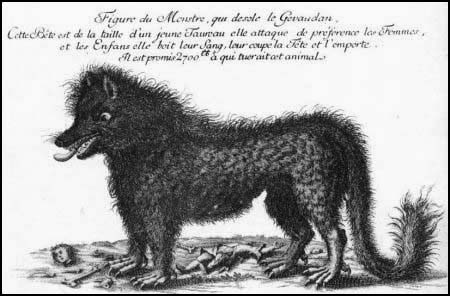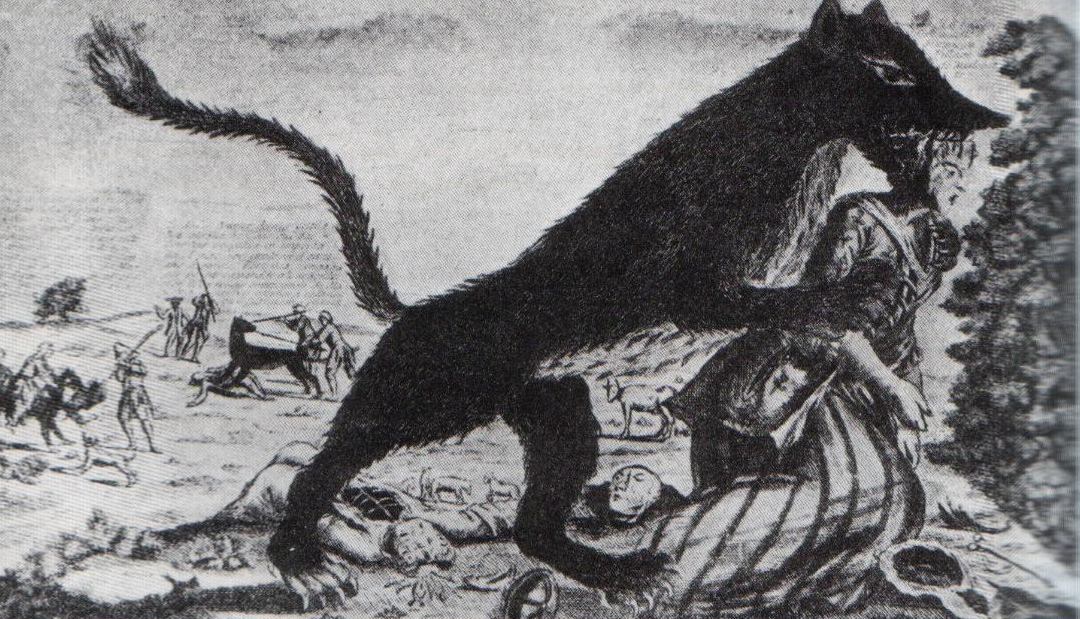Galloglaich
First Post
Peter Stubbe could very likely have been completely innocent ... or he may have been a serial killer. There were many other similar cases, such as Gilles De Rais in Medieval times, and Albert Fish in the US much more recently. Another case in Spain reminds me a great deal of Peter Stubbes confession:
The Wolfman of Allariz - Typically Spanish Features on Spain
the Romasanta case was made into a creepy movie in 2004
Romasanta (2004)
And guys like Albert Fish of course in more recent times.
There was also another similar 19th Century case in Romania but I can't find it right now.

Of course, on the other end of the spectrum there are also many well-documented cases of serial wolf attacks which did seem to be animals. The most famous is La Bete De Gevudain in the 18th Century which was the subject of at least three movies.

Beast of Gévaudan - Wikipedia, the free encyclopedia

This is a statue made to commenorate the incident

Just for fun, a few more famous wolf attack cases:
This one is a favorite, just because the account is so dramatic:
Wolf of Soissons - Wikipedia, the free encyclopedia
These are also quite lurid:
Wolves of Périgord - Wikipedia, the free encyclopedia
Wolf of Sarlat - Wikipedia, the free encyclopedia
Wolves of Périgord - Wikipedia, the free encyclopedia
Wolves of Paris - Wikipedia, the free encyclopedia

I have read some speculation that the epidemic of wolf attacks in France in the 18th Century had to do with the population being systematically disarmed in this period, resulting in wolves becoming less fearful of the peasants over time. This seems to be the reason for the 20th Century Wolf attacks in India and Russia.
This one in Germany is interesting and definitely sounds politically related
Wolf of Ansbach - Wikipedia, the free encyclopedia
This is a great religious story about the killer wolf which was tamed by St. Francis:

Wolf of Gubbio - Wikipedia, the free encyclopedia
Here is one for our Swedish friends:
Wolf of Gysinge - Wikipedia, the free encyclopedia
This was one of the recent cases in India
Wolves of Ashta - Wikipedia, the free encyclopedia
and this was another
Wolves of Hazaribagh - Wikipedia, the free encyclopedia
The craziest story I ever heard about wolf attacks was the one where hundreds of starving wolves attacked German and Russian troops during WW I. Apparently (according to the wiki anyway) the same thing happened again in WW II.
from the Wiki:
Here is the original 1917 New York Times article about this incredible event:
http://query.nytimes.com/mem/archiv...3DD103BE03ABC4151DFB166838C609EDE&oref=slogin
I wish somebody would make a movie about that one ..
Happy Sam Hain! Awoooooooooooooooo!!!!!
G.
The Wolfman of Allariz - Typically Spanish Features on Spain
the Romasanta case was made into a creepy movie in 2004
Romasanta (2004)
And guys like Albert Fish of course in more recent times.
There was also another similar 19th Century case in Romania but I can't find it right now.

Of course, on the other end of the spectrum there are also many well-documented cases of serial wolf attacks which did seem to be animals. The most famous is La Bete De Gevudain in the 18th Century which was the subject of at least three movies.

Beast of Gévaudan - Wikipedia, the free encyclopedia

This is a statue made to commenorate the incident

Just for fun, a few more famous wolf attack cases:
This one is a favorite, just because the account is so dramatic:
Wolf of Soissons - Wikipedia, the free encyclopedia
The Wolf of Soissons was a man-eating wolf which terrorized the commune of Soissons northeast of Paris over a period of two days in 1765, attacking eighteen people, four of which died from their wounds.
The first victims of the wolf were a pregnant woman and her unborn child, attacked in the parish of Septmont on the last day of February. Diligent locals had taken the infant, a scant four or five months old, from the womb to be baptized before it died when the wolf struck again not three hundred yards from the scene of the first attack. One Madame d'Amberief and her son survived only by fighting together.
On 1 March near the hamlet of Courcelles a man was attacked by the wolf and survived with head wounds. The next victims were two young boys, named Boucher and Maréchal, who were savaged on the road to Paris, both badly wounded. A farmer on horseback lost part of his face to the wolf before escaping to a local mill, where a boy of seventeen was caught unawares and slain. After these atrocities the wolf fled to Bazoches, where it partially decapitated a woman and severely wounded a girl, who ran screaming to the village for help. Four citizens of Bazoches set an ambush at the body of the latest victim, but when the wolf returned it proved too much for them and the villagers soon found themselves fighting for their lives. The arrival of more peasants from the village finally put the wolf to flight, chasing it into a courtyard where it fought with a chained dog. When the chain broke the wolf was pursued through a pasture, where it killed a number of sheep, and into a stable, where a servant and cattle were mutilated.
The episode ended when one Antoine Saverelle, former member of the local militia, tracked the wolf to small lane armed with a pitchfork. The wolf sprang at him but he managed to pin its head to the ground with the instrument, holding it down for roughly fifteen minutes before an armed peasant came to his aid and killed the animal. Saverelle received a reward of three-hundred livres from Louis XV of France for his bravery.
These are also quite lurid:
Wolves of Périgord - Wikipedia, the free encyclopedia
Wolf of Sarlat - Wikipedia, the free encyclopedia
Wolves of Périgord - Wikipedia, the free encyclopedia
Wolves of Paris - Wikipedia, the free encyclopedia

I have read some speculation that the epidemic of wolf attacks in France in the 18th Century had to do with the population being systematically disarmed in this period, resulting in wolves becoming less fearful of the peasants over time. This seems to be the reason for the 20th Century Wolf attacks in India and Russia.
This one in Germany is interesting and definitely sounds politically related
Wolf of Ansbach - Wikipedia, the free encyclopedia
This is a great religious story about the killer wolf which was tamed by St. Francis:

Wolf of Gubbio - Wikipedia, the free encyclopedia
Here is one for our Swedish friends:
Wolf of Gysinge - Wikipedia, the free encyclopedia
This was one of the recent cases in India
Wolves of Ashta - Wikipedia, the free encyclopedia
and this was another
Wolves of Hazaribagh - Wikipedia, the free encyclopedia
The craziest story I ever heard about wolf attacks was the one where hundreds of starving wolves attacked German and Russian troops during WW I. Apparently (according to the wiki anyway) the same thing happened again in WW II.
from the Wiki:
During the First World War, starving wolves had amassed in great numbers in Kaunas, Vilna and Minsk and began attacking Imperial Russian and Imperial German fighting forces, causing the two fighting armies to form a temporary truce to fight off the animals.[6] After the fall of the Soviet Union, documents were discovered indicating that a number of wolf attacks had occurred in villages during the Eastern front. This information was apparently suppressed by the Soviet government in order to hide the consequences of the mass confiscation of firearms during the war.[7]
Here is the original 1917 New York Times article about this incredible event:
http://query.nytimes.com/mem/archiv...3DD103BE03ABC4151DFB166838C609EDE&oref=slogin
I wish somebody would make a movie about that one ..
Happy Sam Hain! Awoooooooooooooooo!!!!!
G.
Last edited:



